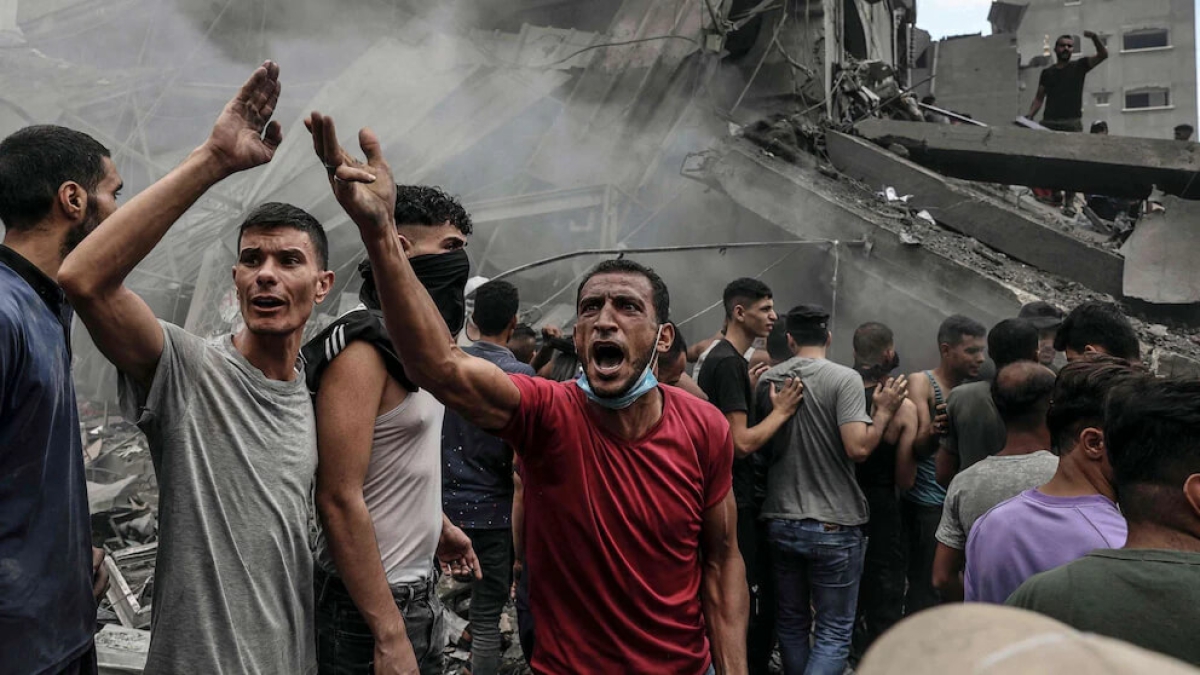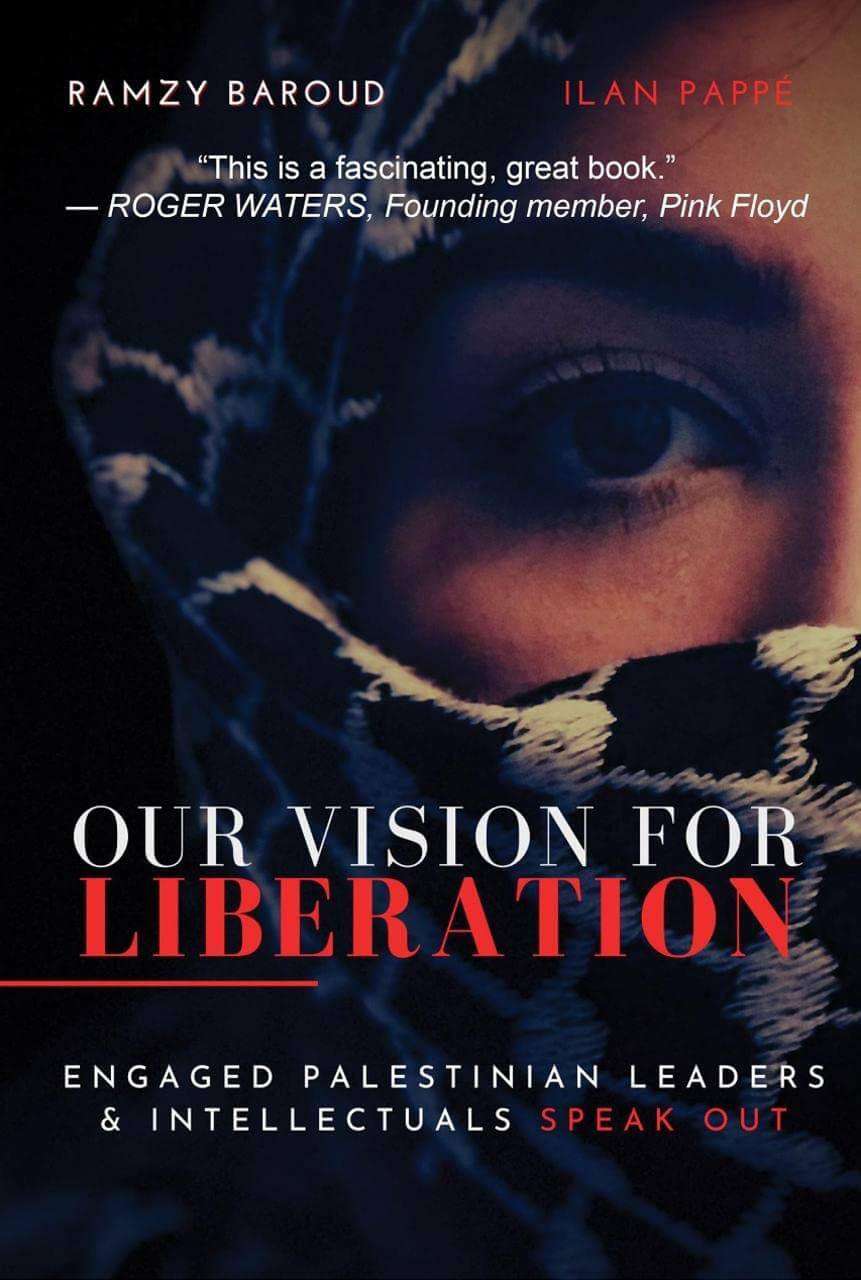‘Al-Quds Flood’: Altered Palestine and Israel Forever

Regardless of the precise strategy of the Palestinian group Hamas, or any other Palestinian movement for that matter, the daring Palestinian military campaign, deep inside Israel, on Saturday, October 7, was only possible because Palestinians are simply fed up.
17 years ago, Israel imposed a hermetic siege on the Gaza Strip. The story of the siege is often presented in two starkly different interpretations. For some, it is an inhumane act of ‘collective punishment’; for others, it is a necessary evil so that Israel may protect itself from so-called Palestinian terrorism.
Largely missing from the story, however, is that 17 years are long enough for a whole generation to grow up under siege, to enlist in the Resistance and to fight for its freedom.
According to Save The Children, nearly half of the 2.3 million Palestinians living in Gaza today are children.
This fact is often infused to delineate the suffering of a population that has never stepped outside the tiny, impoverished Strip of 365 square km, approximately 141 square miles.
But again, numbers, though may seem precise, are often employed to tell a small part of a complex story.
This Gaza generation, which either grew up or was born after the imposition of the siege, experienced at least five major, devastating wars, of which children, like them, along with their mothers, fathers, and siblings, were the main targets, victims.
“If you surround your enemy completely, give them no chance to escape, offer them no quarter, then they will fight to the last,” wrote Sun Tzu in The Art of War.
Yet, year after year, this is precisely what Israel has done. This strategy proved to be a major strategic miscalculation.
Even the mere attempt at protesting the injustice of the siege, by gathering in large numbers at the Gaza fence, separating besieged Gaza from Israel, was not permitted.
The mass protests, known as the Great March of Return, were answered with Israeli sniper bullets. Scenes of youngsters, carrying other bleeding youth, shouting ‘God is Great,’ became a regular scene at the fence.
As the casualty count increased, the media interest in the story simply faded with time.
The hundreds of fighters who crossed into Israel through four different entry points at dawn, on October 7, were these same young Palestinians who knew nothing but war, siege, and the need to protect one another.
They also learned how to survive, despite the lack of everything in Gaza, including clean water and proper medical care.
This is where the story of this generation intersects with that of Hamas, or the Islamic Jihad and any other Palestinian group.
Yes, Hamas chose the timing and the nature of its military campaign to fit into a very precise strategy. This strategy, however, would have not been possible if Israel did not leave these young Palestinians with no other option but to fight back.
Videos circulating on social media showed Palestinian fighters yelling in Arabic, with that distinct, often harsh sounding Gaza accent, “this is for my brother,” “this is for my son.”
They shouted these and many other angry statements as they fired, among panic-stricken Israeli settlers and soldiers. The latter, on many occasions, had abandoned their positions and run away.
The psychological impact of this war will most certainly exceed that of October 1973, when Arab armies made quick gains against Israel, also following a surprise attack.
This time, the devastating impact on the collective Israeli thinking will prove to be a game-changer, since the ‘war’ involves a single Palestinian group, not a whole army, or three.
The October 2023 surprise attack, however, is directly linked to the October 1973 Arab-Israeli war.
By choosing the 50th anniversary of what Arabs consider a great triumph against Israel, Palestinian Resistance wanted to send a clear message: the cause of Palestine remains still the cause of all Arabs.
In fact, all statements made by top Hamas military commanders and political leaders were loaded with such symbolism and other references to Arab countries and peoples.
This pan-Arab discourse was not haphazard and was delineated in statements made by the Commander of Al-Qassam Brigades, Mohammed Deif, founding commander of Al-Qassam, Saleh al-Arouri, Head of Hamas Political Bureau, Ismail Haniyeh, and Abu Obeida, the Brigades’ famous masked spokesman.
They all urged unity and insisted that Palestine is but a component of a larger Arab, Islamic struggle for justice, dignity and collective honor.
The group called its campaign ‘Al-Aqsa Flood’, thus, again, recentering Palestinian, Arab, and Muslim unity around Al-Quds, Jerusalem, and all its holy places.
Everyone seemed shocked, including Israel itself, not by the Hamas attack per se, but by the great coordination and daringness of the massive, never-seen-before, operation.
So, instead of attacking at night, the Resistance attacked at dawn. Instead of striking at Israel using the many tunnels under Gaza, they simply drove there, parachuted, arrived by sea, and in many cases, walked across the border.
The element of surprise became even more baffling when Palestinian fighters challenged the very fundamentals of guerrilla warfare: Instead of fighting a ‘war of maneuver’, they, however temporarily, fought a ‘war of position’, thus holding for many hours on the areas they gained inside Israel.
Indeed, for the Gaza groups, the psychological warfare was as critical as the physical fighting. Hundreds of videos and images beamed through every social media channel, as if hoping to redefine the relationship between Palestinians, the usual victim, and Israel, the military occupier.
The insistence on not killing the elderly and children, as emphasized by various field commanders, was not just intended for Palestinians. It was also a message for an international audience, that Palestinian Resistance will play by the accepted universal rules.
Regardless of how many Palestinians Israel kills, and will kill, in retaliation, although tragic, it will hardly salvage the tattered image of an undisciplined army, a divided society, and a political leadership that is solely focused on its own survival.
It is too early to reach sweeping conclusions regarding the outcomes of this unprecedented war. But what is crystal clear is that the fundamental relationship between the Israeli occupation and occupied Palestinians after October 7, 2023, is likely to be altered, and permanently so.
 Dr. Ramzy Baroud is a journalist, author and the Editor of The Palestine Chronicle. He is the author of six books. His latest book, co-edited with Ilan Pappé, is ‘Our Vision for Liberation: Engaged Palestinian Leaders and Intellectuals Speak Out’. His other books include ‘My Father was a Freedom Fighter’ and ‘The Last Earth’. Baroud is a Non-resident Senior Research Fellow at the Center for Islam and Global Affairs (CIGA). His website is www.ramzybaroud.net
Dr. Ramzy Baroud is a journalist, author and the Editor of The Palestine Chronicle. He is the author of six books. His latest book, co-edited with Ilan Pappé, is ‘Our Vision for Liberation: Engaged Palestinian Leaders and Intellectuals Speak Out’. His other books include ‘My Father was a Freedom Fighter’ and ‘The Last Earth’. Baroud is a Non-resident Senior Research Fellow at the Center for Islam and Global Affairs (CIGA). His website is www.ramzybaroud.net
Topics: Conflicts And War, Gaza, Israel, Israeli-Palestinian Conflict, Palestine
Views: 1165
Related Suggestions
















